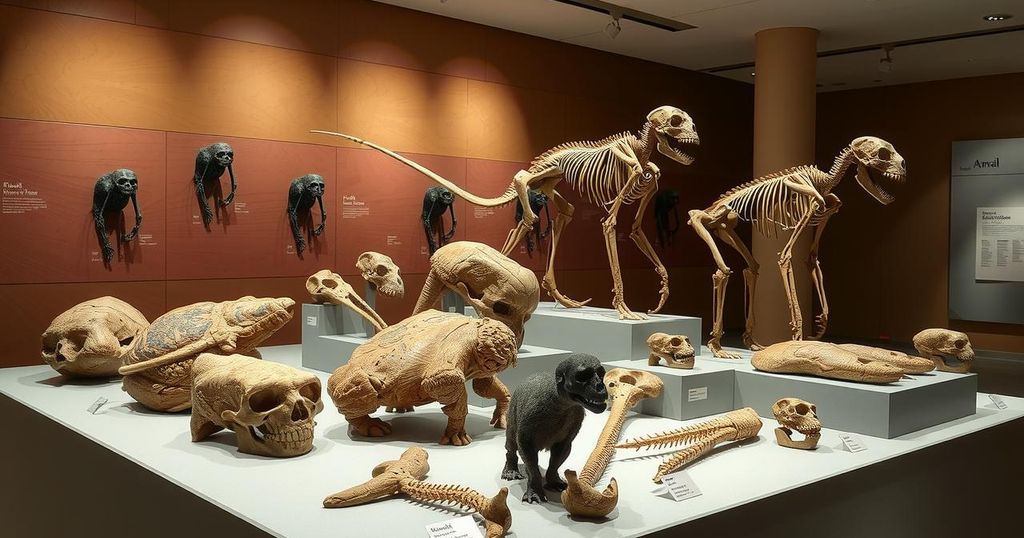AGU 2024: Planet’s Role in Pioneering Future Scientific Discoveries
At the AGU 2024 meeting in Washington, D.C., Planet showcased how satellite data fosters scientific advancement. The theme “What’s Next for Science?” highlighted innovative research applications, such as monitoring forest health and estimating agricultural yields. Researchers shared findings on natural disasters and environmental impacts, demonstrating the integral role of data in scientific discovery.
This week in Washington, D.C., the vibrant American Geophysical Union Fall Meeting, affectionately known as AGU 2024, set the stage for scientific brilliance under the captivating theme of “What’s Next for Science?” Here at Planet, we embraced this theme wholeheartedly, showcasing our commitment to transforming the landscape of scientific discovery with agile aerospace and cutting-edge data solutions. With each passing AGU meeting, we continue to be astonished by the innovative ways researchers harness our data to push the boundaries of knowledge in their respective fields.
As the year draws to a close, our hearts brim with gratitude for the incredible scientific community that includes researchers, professors, analysts, and eager students. We’re piqued by your findings and look forward to supporting your future endeavors. Join our Planet Community to share insights or obtain community support, and explore Planet University for enriching resources.
Among the thrilling research shared at AGU 2024, one could observe Arizona State University’s use of deep learning models combined with PlanetScope data to assess forest thinning practices aimed at rejuvenating ecosystem vitality in the West. Researchers at the University of Michigan adeptly employed a blend of Planet, Landsat, and Sentinel-2 data to gauge corn yields in Ethiopia, supporting smallholder farmers facing escalating food demands. From the icy expanse of Thwaites Glacier to the tumultuous landscapes shaped by natural disasters, Planet data was not just a tool but a catalyst for understanding and prediction.
The University of Zurich illuminated fire patterns in the Arctic tundra, while Kookmin University cleverly utilized Planet imagery to innovate landslide prediction models in South Korea. Researchers from the International Water Management Institute assessed the impact of Tropical Cyclone Remal on India’s Ganga-Brahmaputra-Meghna Basin, weaving together environmental and economic narratives through satellite data. Meanwhile, the collaborative efforts of scientists from various esteemed universities and NASA tackled the critical issue of snow classification, impacting vital water resources in California and Colorado.
Our own Planet team joined the festivities at AGU 2024, sharing groundbreaking results from our Tanager-1 hyperspectral satellite and elucidating the role of our satellite data in promoting biodiversity and enhancing agricultural insights. If you haven’t yet visited us at booth 1009, the time is ripe to connect and explore. For those seeking deeper insight into our scientific offerings, we invite you to learn more and engage with our vibrant community.
The AGU Fall Meeting serves as a significant platform where scientists gather to share advancements in geophysical research. This year’s theme reflects a pivotal moment in the scientific community as researchers incorporate innovative methods and technologies in their studies. Planet’s role as a leader in aerospace and remote satellite data exemplifies how technology can be leveraged to address pressing global challenges, unveiling new avenues for research and discovery.
AGU 2024 shone as a beacon of scientific innovation, where Planet’s contributions catalyzed discussions on sustainability, disaster prediction, and ecological insights. The diverse applications of satellite data underscore the importance of collaboration and ingenuity in research. As we move forward, the synergy between technology and scientific inquiry holds the promise of transformative discoveries that can impact our understanding of the world.
Original Source: www.planet.com




Post Comment